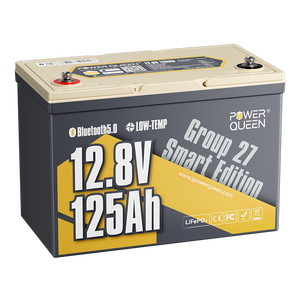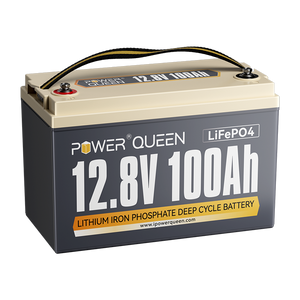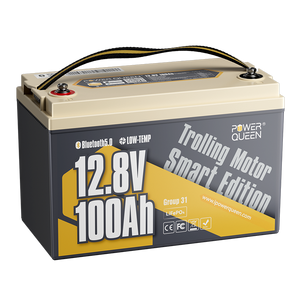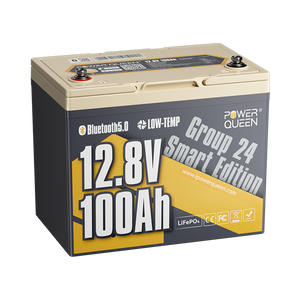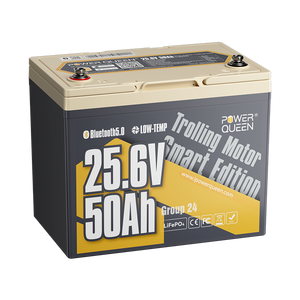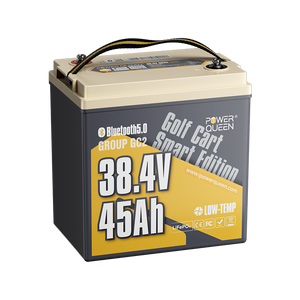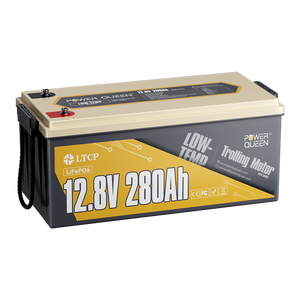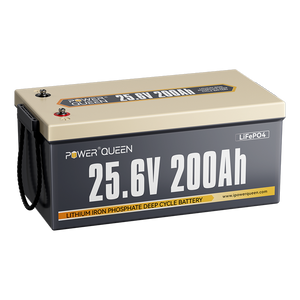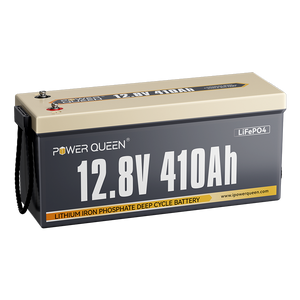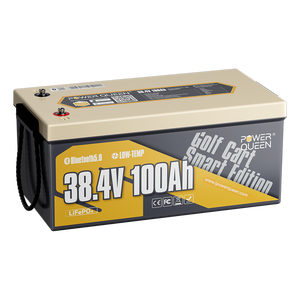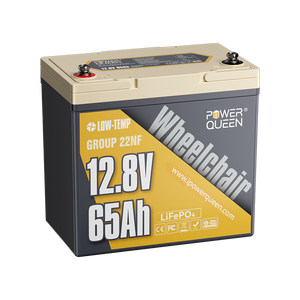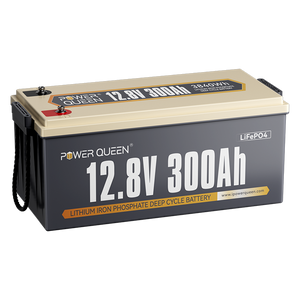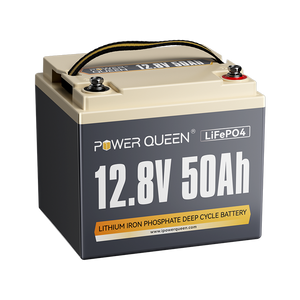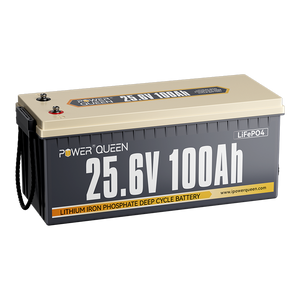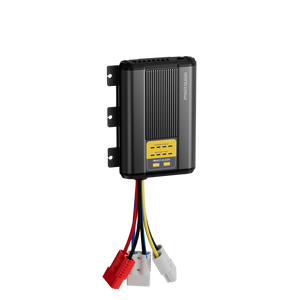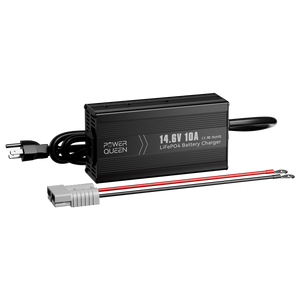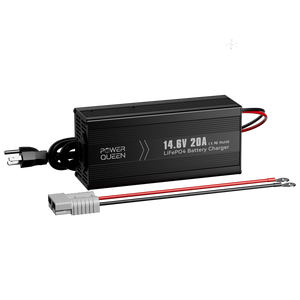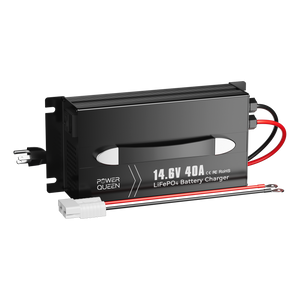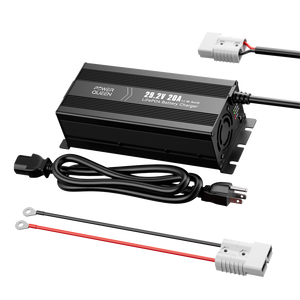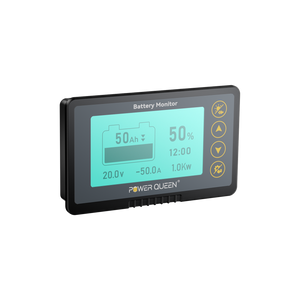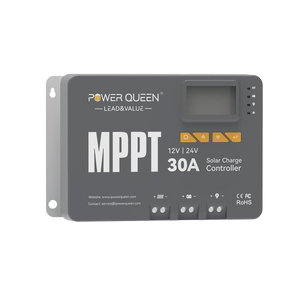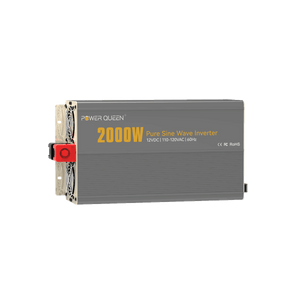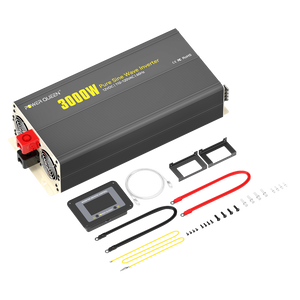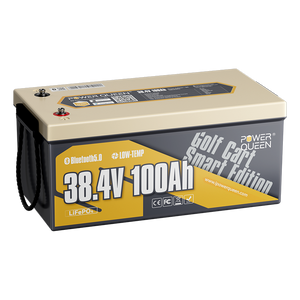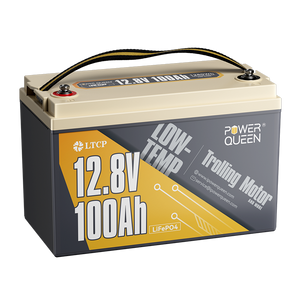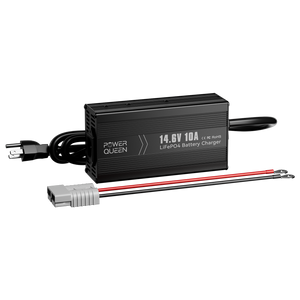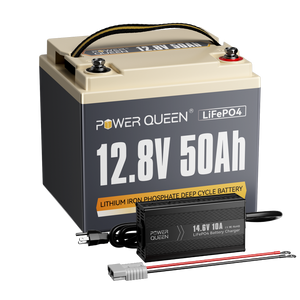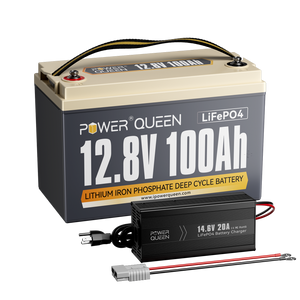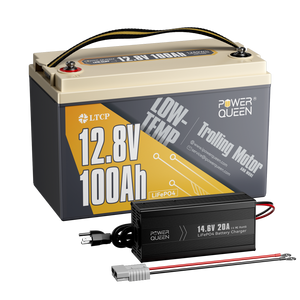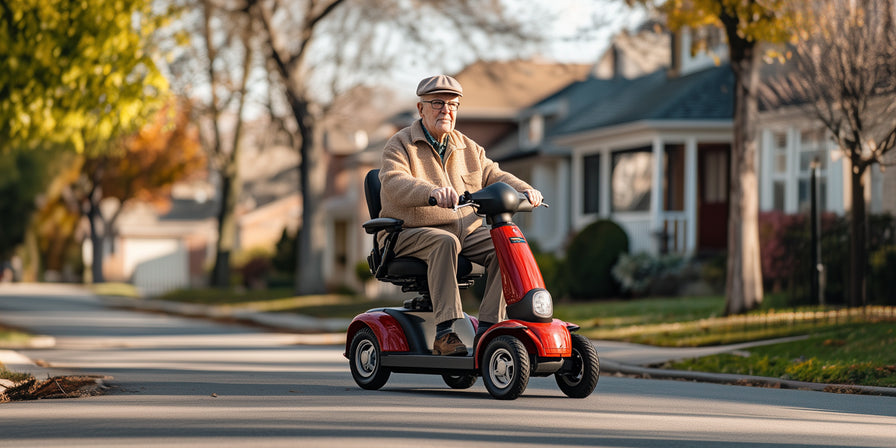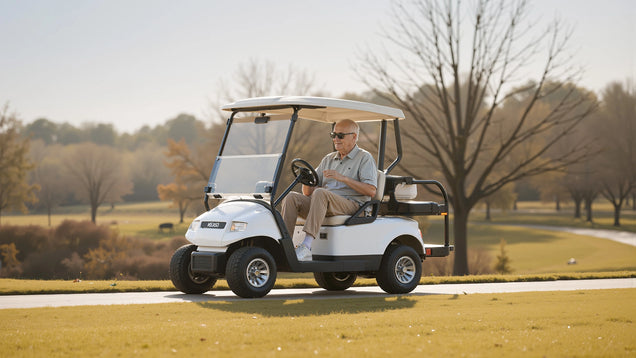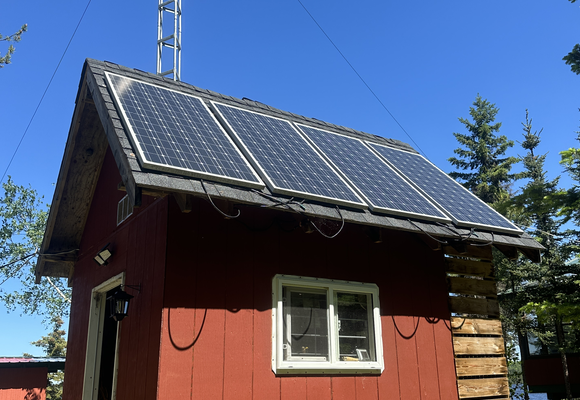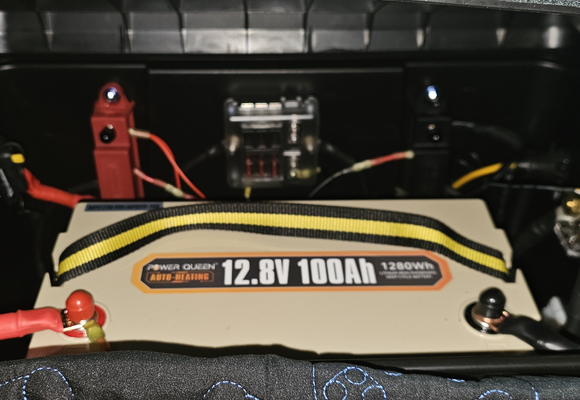[Full Guide] How Long Do Lithium Batteries Last?
As the world shifts towards clean and sustainable energy sources, Lithium-Ion (Li-ion) batteries have gained significant popularity. Known for their high energy density and long lifespan, these batteries have revolutionized the industry. However, many users often wonder, "How long do Lithium-Ion batteries last?" In this article, we will delve into the answer to this question and explore how LiFePO4 batteries, an advanced type of Lithium-Ion battery, compare in terms of lifespan.
Table of Content
- Part 1. What are lithium-ion batteries?
- Part 2. How Long Do Lithium-Ion Batteries Last?
- Part 3. Factors that influence the lifespan of lithium-ion batteries
- Part 4. Methods to Prolong the Li-ion battery lifespan
- Part 5. FAQs about Li-ion Battery
- Part 6. Is the Investment in Lithium-Ion Batteries Worth It?
Part 1. What are lithium-ion batteries?
Lithium-ion batteries, including Lithium iron phosphate (LiFePO4) batteries, are rechargeable and utilize lithium ions as the primary component of their electrolyte. LiFePO4 batteries offer several advantages over other types of batteries, such as a longer lifespan, higher efficiency and energy density, lower maintenance requirements, enhanced safety, and environmental friendliness. These qualities make them ideal for off-grid power systems, high-powered applications, and mobility solutions.
As starting batteries, Li-ion batteries are often used in vehicles due to their high energy density and lightweight nature. They are well-suited for this application because they can provide a short burst of high current to start the engine. Li-ion batteries used as starting batteries are usually of smaller capacity and should not be discharged too deeply to avoid damage.
On the other hand, LiFePO4 batteries excel as deep-cycle batteries. They can withstand frequent, deep discharges, making them ideal for renewable energy storage and other deep-cycle applications. With a longer cycle life than Li-ion batteries, LiFePO4 batteries can deliver high-power applications over extended periods. Learn more differences between 2 kinds of battery from Marine Deep Cycle And Starting Battery.
Part 2. How Long Do Lithium-Ion Batteries Last?
On average, a standard Li-ion battery lasts 2-3 years, depending on its usage. However, this lifespan can extend up to five years with proper maintenance and adherence to the manufacturer's instructions. Li-ion batteries are sensitive to temperature, and high temperatures can significantly reduce their lifespan. Therefore, it is crucial to store your Li-ion battery in a cool, dry place to avoid heat exposure and prolong its life.
LiFePO4 batteries represent a more advanced and sustainable type of Li-ion battery, gaining increasing popularity in the industry. These batteries have a longer lifespan than standard Li-ion batteries, lasting up to 10 years or more. Additionally, LiFePO4 batteries are highly stable and safe, providing a more reliable and sustainable solution for off-grid power and mobility applications.
One significant advantage of LiFePO4 batteries is their ability to handle more charge and discharge cycles. While standard Li-ion batteries can manage up to 500-1000 cycles, LiFePO4 batteries can endure up to 2000 cycles, making them a more durable and cost-effective solution in the long run. The Power Queen LiFePO4 battery can handle between 4000 to 15000 cycles, with a lifespan of over 10 years, making it an ideal alternative to lead-acid deep cycle batteries. Additionally, LiFePO4 batteries are much safer than standard Li-ion batteries, as they are less prone to overheating or exploding due to their chemical composition.
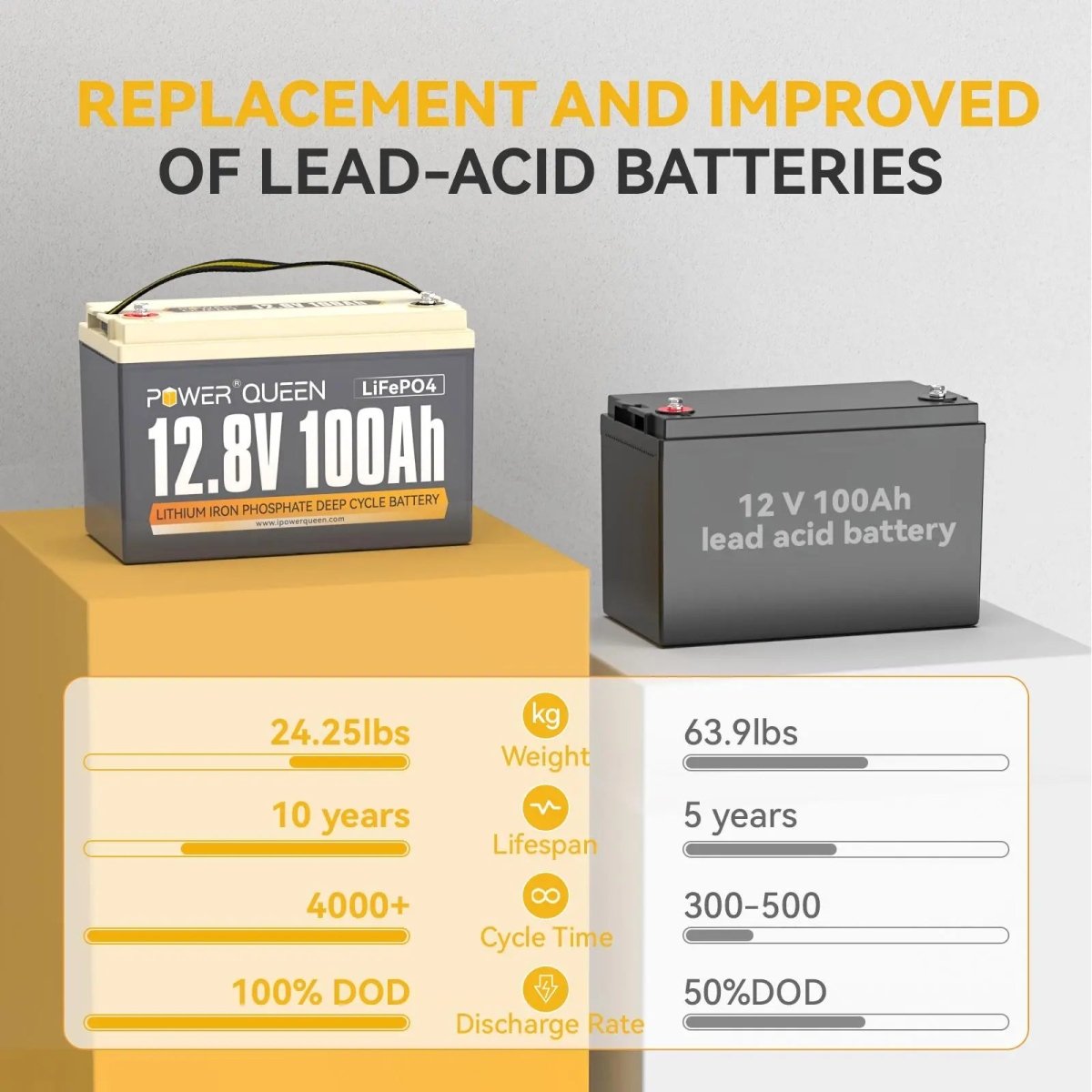
Power Queen offers high-quality LiFePO4 batteries that are designed to last longer, be more efficient, and sustainable. We provide a range of battery sizes and capacities, suitable for various off-grid power and mobility applications. Power Queen takes pride in the quality and durability of their batteries, which are thoroughly tested to ensure customer satisfaction.
Part 3. Factors that influence the lifespan of lithium-ion batteries
According to the research A STUDY OF THE FACTORS THAT AFFECT LITHIUM ION BATTERY DEGRADATION, here are the factors that could influence the lifespan of lithium-ion batteries.
3.1 During Storage
1) Temperature
The major cause of battery capacity loss during storage is temperature, with higher temperatures leading to the thermal decomposition of the electrodes and electrolyte.
Electrolyte decomposition enhances the thickness of the solid electrolyte interface (SEI) film on the anode, consuming lithium ions, increasing internal resistance, and reducing battery capacity. This decomposition also generates gases, increasing internal pressure and posing safety risks. As shown in Table 3.1, Li-ion batteries stored at the same state of charge (40%) lose varying percentages of their capacity over one year at different temperatures.
The degree of degradation increases with higher temperatures, and extreme temperatures significantly accelerate capacity loss. For example, a 25°C increase from 0°C to 25°C results in only a 2% increase in capacity loss, while a 20°C increase from 40°C to 60°C causes a 10% increase in capacity loss.

Table 3.1
Temperatures exceeding 30°C are considered stressful environments for Lithium-ion batteries and can result in substantial calendar-life loss. To extend battery life, it is advisable to store Li-ion batteries at temperatures ranging from 5°C to 20°C.
2) State of Charge (SOC)
Li-ion batteries exhibit an increase in open circuit voltage (OCV) as the state of charge (SOC) increases, as illustrated in Figure 3.2. When stored, a higher battery SOC leads to a higher OCV. However, high OCV can prompt solid electrolyte interface (SEI) growth and trigger electrolyte oxidation within Li-ion batteries, resulting in capacity loss and increased internal resistance (IR).

Figure 3.2
Figure 3.3 demonstrates varying degradation rates of Li-ion batteries at different SOCs over ten years of storage. The remaining capacity of Li-ion batteries depletes more rapidly as SOC levels increase.

Figure 3.3
To minimize battery degradation and extend battery lifespan, it is advisable to maintain Li-ion batteries at a moderate SOC level. It is recommended to charge or discharge Li-ion batteries to around 50% SOC before storing them.
3.2 During cycling
1) Temperature
While increased temperature during battery operation can temporarily enhance performance, prolonged cycling at high temperatures shortens battery lifespan. For instance, a battery operated at 30°C has a 20% reduced cycle life, while at 45°C, the battery would last only half as long as it would at 20°C.
Manufacturers specify a nominal operating temperature of 27°C to optimize battery runtime. Conversely, extremely low temperatures increase internal resistance and decrease discharge capacity. A battery that provides 100% capacity at 27°C (80°F) delivers only 50% capacity at -18°C (0°F).
The discharge capacity of lithium polymer cells varies with temperature, with lower capacities observed at low temperatures (0°C, -10°C, -20°C) compared to higher temperatures (25°C, 40°C, 60°C). Charging Li-ion batteries at low temperatures (below 15°C) can lead to lithium plating due to slowed intercalation of lithium ions, which accelerates battery degradation by increasing internal resistance and further decreasing discharge capacity.

Figure 3.4
To maximize the lifespan and performance of Li-ion batteries, it is recommended to operate them at moderate temperatures. A temperature of 20°C or slightly below is optimal for achieving maximum service life. However, manufacturers recommend a slightly higher temperature of 27°C when maximum battery runtime is required.
2) Depth of Discharge
Depth of discharge (DOD) has a significant impact on the cycle life of Li-ion batteries. Deep discharges create pressure within the cells and damage the negative electrode sites, accelerating capacity loss and increasing the risk of cell damage. As illustrated in Figure 3.5, higher cycling DOD results in a shorter battery cycle life.

Figure 3.5
Discharge depths above 50% are considered deep discharges. When a Li-ion battery's voltage drops from 4.2V to 3.0V, approximately 95% of its energy is consumed, leading to the shortest possible battery life with continuous cycling. To prevent capacity loss, it is advisable to avoid full discharges during battery cycling. Partially discharging and charging Li-ion batteries helps to prolong their lifespan.
Manufacturers typically rate a battery using the 80% DOD formula, meaning that only 80% of the input energy is utilized during usage, with the remaining 20% reserved to extend battery service life. While reducing DOD can increase cycle life, too low a DOD can result in insufficient battery runtime and an inability to complete certain tasks. A DOD of around 50% is recommended for Li-ion batteries to achieve maximum lifespan and optimal service time.
3) Charge voltage
Li-ion batteries can achieve high capacity and extended runtime with high charge voltages. However, fully charging them is not advisable as it can lead to lithium plating, which causes capacity loss and potentially damages the battery, increasing the risk of fires or explosions.

Figure 3.6
Figure 3.6 illustrates capacity degradation at high charge voltages (>4.2V/cell), showing that higher voltages result in faster capacity loss and reduced cycle life. The recommended charge voltage for optimal capacity and safety is 4.2V. Reducing the charge voltage by 70mV can decrease overall capacity by approximately 10%.
Table 3.2 indicates that the cycle life is longest (2400-4000 cycles) at a charge voltage of 3.90V, and it is halved with each 0.10V increase in charge voltage within the range of 3.90V to 4.30V.

Table 3.2
To prevent significant battery degradation, Li-ion batteries should be charged at a voltage level below 4.10V. While a lower charge voltage extends battery life, it results in reduced runtime. Additionally, discharging below 2.5V/cell should be avoided, and a charge voltage of 3.92V is optimal for achieving the longest cycle life. This is why Power Queen does not recommend charging a Lifepo4 battery with a Lead Acid Charger, as its voltage is insufficient for proper charging. Below is the format of recommended charging voltage for different deep cycle battery system.

The recommended charging voltage varies depending on the type of deep cycle battery system. For electronic devices like laptops and cellphones, a higher voltage threshold is used to maximize battery runtime. In contrast, large energy storage systems for satellites or electric vehicles set a lower voltage threshold to extend battery life. Regardless of the application, overcharging Li-ion batteries can significantly reduce their lifespan and pose safety risks, such as fires or explosions, and therefore requires careful management.
4) Charge current/ C-rate
Li-ion batteries experience several negative effects when subjected to high C-rates, including increased internal resistance, loss of available energy, safety concerns, and irreversible capacity loss.
One major consequence of high C-rates is lithium plating. Charging a Li-ion battery with high current causes lithium ions to migrate rapidly, leading to the accumulation of lithium on the anode surface and forming metallic lithium. This process is exacerbated when batteries are fast-charged at low temperatures or high state-of-charge (SOC).
The deposited lithium can form dendritic structures under gravitational influence, which increases the battery's self-discharge rate. In severe cases, this can lead to short circuits and potential fires. Additionally, high charge and discharge currents contribute to greater energy loss due to internal resistance, converting energy into heat. When the C-rate exceeds the battery's recommended level, the increased temperature can stress the battery, causing damage and accelerating capacity loss.

5) Cycle frequency
Frequent cycling of Li-ion batteries, especially when occurring four or more times per day, can induce mechanical stress and promote the growth of the Solid Electrolyte Interphase (SEI) layer.
During cycling, Li-ion batteries experience a loss of both positive and negative lithium reaction sites on the electrodes, which decreases their capacity. The buildup of the SEI layer increases the battery's internal resistance, reducing electronic conductivity and loading capability.
The thickening of the SEI layer, reduction in lithium sites, and other chemical changes inside Li-ion batteries lead to capacity loss and eventual battery failure. Although no specific research directly addresses this issue, it is believed that high cycle frequencies accelerate battery degradation due to the elevated temperatures generated by frequent use.
Continuously cycling Li-ion batteries without sufficient cooling time can cause chemical stress, leading to the decomposition of electrolytes and electrodes.
Part 4. Methods to Prolong the Li-ion battery lifespan
To maximize the lifespan of Li-ion batteries, follow these guidelines:
- Keep the battery at moderate temperatures: High temperatures can reduce battery lifespan. It is recommended to store or use Li-ion batteries within a moderate temperature range of 5°C to 20°C.
- Partial discharge and charging: Partially discharging and charging Li-ion batteries, rather than fully cycling them, can prolong their life. Avoid deep discharges above 50% DOD to extend battery lifespan.
- Maintain moderate SOC levels: Extreme SOC levels can cause capacity loss and shorten battery lifespan. Keeping Li-ion batteries at an intermediate SOC level helps minimize degradation and extend their life.
- Avoid heat exposure: High temperatures during use or storage can increase SEI thickness and trigger electrolyte oxidation, leading to capacity loss and reduced lifespan.
- Store batteries properly when not in use: Store Li-ion batteries at around 50% SOC and protect them from extreme temperatures and humidity levels when not in use.
- Avoid fast charging and discharging: Rapid charging or discharging generates excess heat, which can damage the battery's internal components over time and reduce its overall lifespan.
- Use original equipment manufacturer (OEM) chargers: Using OEM chargers designed specifically for Li-ion batteries ensures they receive the correct voltage and current, preventing damage and prolonging their lifespan. Power Queen provides suitable LiFePO4 battery chargers for charging LiFePO4 lithium batteries.
Part 5. FAQs about Li-ion Battery
1. How long do lithium battery last in cars?
The lifespan of lithium batteries used in cars depends on several factors, including the battery's quality, usage patterns, and environmental conditions. Generally, a well-maintained lithium battery in a car can last between 8 to 10 years or even longer.
However, the lifespan can vary significantly based on factors such as how frequently the car is used, charging habits, ambient temperature, and driving style. To ensure maximum lifespan and performance, it is essential to follow the manufacturer's guidelines for maintaining and charging the battery.
2. How long do lithium battery last in golf carts?
A well-maintained lithium battery in a golf cart typically lasts between 5 to 7 years or more. Power Queen lithium golf cart batteries, with a life cycle of up to 4000-15000 cycles, can last over 10 years.



3. How long can lithium battery last without charging?
The length of time a Lithium-ion battery can last without charging depends on several factors, including the battery's capacity, the device it's in, and the device's power consumption. On average, most Lithium-ion batteries can last between 2 to 10 years without charging, depending on storage conditions. However, this timeframe can vary based on temperature, usage patterns, and storage conditions. Proper storage and maintaining the recommended state of charge (SOC) are essential to maximize lifespan. Even when not in use, Lithium-ion batteries can lose charge over time and may require recharging before use.
4. Is LiFePO4 battery safer than lithium ion battery?
Yes, Lithium Iron Phosphate (LiFePO4 or LFP) batteries are considered safer than traditional Lithium-Ion (Li-ion) batteries. This is due to their more stable chemistry, which makes them less prone to overheating, thermal runaway, and other safety issues.
LiFePO4 batteries have a lower risk of thermal runaway because of their lower internal resistance, which means they generate less heat, reducing the likelihood of cell damage or explosion. Additionally, they offer higher thermal stability and can withstand high temperatures without degrading or losing capacity, making them ideal for applications requiring a durable and reliable power source.
Part 6. Is the Investment in Lithium-Ion Batteries Worth It?
Compared to outdated lead-acid batteries, lithium-ion batteries are undeniably a superior option. They are lighter, have a higher power-holding capacity, and exhibit a lower rate of self-discharge. Additionally, they require less maintenance and have a longer service life. Although they may be more expensive initially, the overall savings they provide are significant. Thus, we consider lithium-ion batteries a valuable investment. They offer a reliable and hassle-free means of storing substantial amounts of power, which can be especially useful when needed most.
